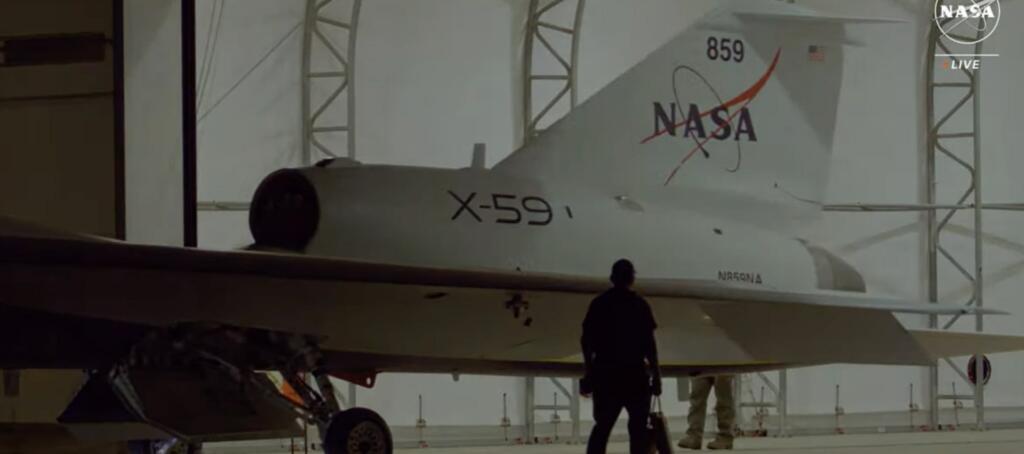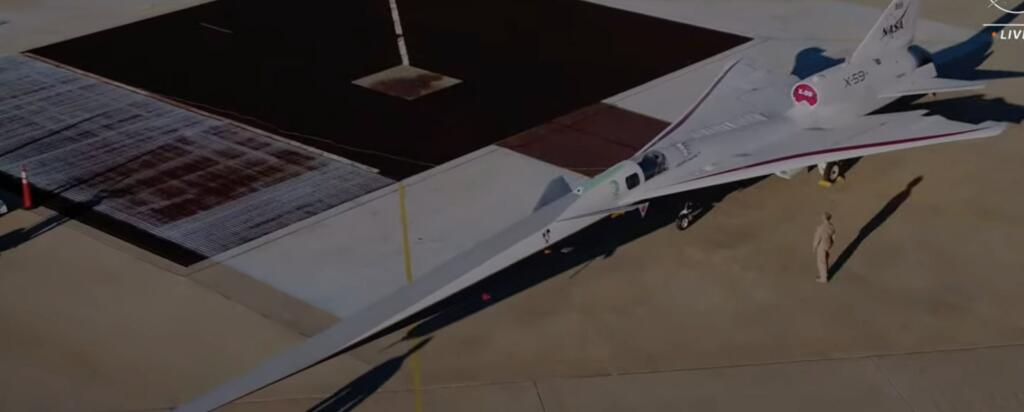NASA’s rolled out the new X-59 Quesst supersonic aircraft live from Lockheed Martin’s Skunk Works facility in Palmdale, California. Quesst is NASA’s mission to demonstrate how the X-59 can fly supersonic without generating loud sonic booms, and then survey what people hear when it flies overhead. Reaction to the quieter sonic thumps will be shared with regulators who will then consider writing new sound-based rules to lift the ban on faster-than-sound flight over land.
A sonic boom happens when the shock waves from an object traveling through the air faster than the speed of sound merge together before they reach the ground. Sonic booms generate enormous amounts of sound energy, about 110 decibels, like the sound of an explosion or a thunderclap.



They describe X-59 is like an Olympic diver barely making a ripple going into the water versus current supersonic planes being like someone doing a cannonball.


The X-59 is at the center of NASA’s Quesst mission, which focuses on providing data to help regulators reconsider rules that prohibit commercial supersonic flight over land. For 50 years, the U.S. and other nations have prohibited such flights because of the disturbance caused by loud, startling sonic booms on the communities below. The X-59 is expected to fly at 1.4 times the speed of sound, or 925 mph. Its design, shaping and technologies will allow the aircraft to achieve these speeds while generating a quieter sonic thump.
With rollout complete, the Quesst team will shift to its next steps in preparation for first flight: integrated systems testing, engine runs, and taxi testing for the X-59.
The aircraft is set to take off for the first time later this year, followed by its first quiet supersonic flight. The Quesst team will conduct several of the aircraft’s flight tests at Skunk Works before transferring it to NASA’s Armstrong Flight Research Center in Edwards, California, which will serve as its base of operations.
The X-59 is a unique experimental airplane, not a prototype – its technologies are meant to inform future generations of quiet supersonic aircraft.
At 99.7 feet long and 29.5 feet wide, the aircraft’s shape and the technological advancements it houses will make quiet supersonic flight possible. The X-59’s thin, tapered nose accounts for almost a third of its length and will break up the shock waves that would ordinarily result in a supersonic aircraft causing a sonic boom.

Brian Wang is a Futurist Thought Leader and a popular Science blogger with 1 million readers per month. His blog Nextbigfuture.com is ranked #1 Science News Blog. It covers many disruptive technology and trends including Space, Robotics, Artificial Intelligence, Medicine, Anti-aging Biotechnology, and Nanotechnology.
Known for identifying cutting edge technologies, he is currently a Co-Founder of a startup and fundraiser for high potential early-stage companies. He is the Head of Research for Allocations for deep technology investments and an Angel Investor at Space Angels.
A frequent speaker at corporations, he has been a TEDx speaker, a Singularity University speaker and guest at numerous interviews for radio and podcasts. He is open to public speaking and advising engagements.
>>> Read full article>>>
Copyright for syndicated content belongs to the linked Source : Next Big Future – https://www.nextbigfuture.com/2024/01/nasa-and-lockheed-show-quiet-supersonic-x-59-quesst-jet.html










